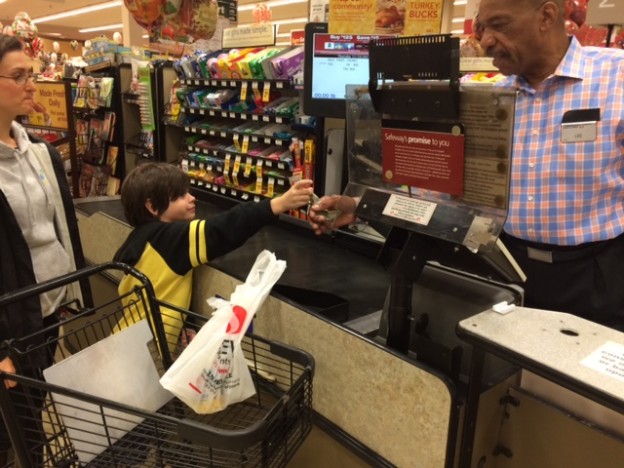
Published on: March 30, 2016
You’ve just received an update that your child is excelling in many of their programs at school, some of which may have even been mastered! You are ecstatic over the great news; however, the work is not done.
The next step towards your child’s independence is generalization. Merriam-Webster defines generalization as,
“the act or process whereby a learned response is made to a stimulus similar to but not identical with the conditioned stimulus”.
In other words, generalization is the transfer of a learned skill from the setting where it was taught to a more natural setting. Your child has mastered a skill in a controlled setting, but may still need assistance applying the skill to different faces and environments.
Let’s say that your child is making progress on appropriate ways to gain attention of others (raising their hand, taping on the shoulder, waving). They are able to appropriately gain attention from various teachers, therapists and peers in their classroom, but may still have trouble gaining attention from siblings at home. Many programs are designed to promote generalization, but your child may simply be having difficulty recognizing the skill in a different setting.
The best way to ensure that your child is able to carry over their newly learned skill with generalization is to maintain consistency. It is crucial to follow the same procedures, strategies and reinforcement schedules which were used to learn the skill initially.
For instance, if your child was receiving a minute of special toy time for tapping a peer on the shoulder before talking to them in the classroom, then they should be given the same toy for the target behavior at home. Open communication across your child’s team will make this process much easier. Remember, your child’s team should involve anyone who comes in regular contact with your child. That means if they are staying the weekend with Grandma, then be sure to inform Grandma of the proper protocols.
Many programs that your child is practicing in the classroom can be modified to practice the skill at home. For example, if your child is trying to request a snack in the kitchen, turn your body away from them and hold your response until they say “excuse me” or tap you on the shoulder. The behavior will be naturally reinforced when you provide them with the snack that they appropriately asked for. If your child has successfully maintained the skill at home, keep the momentum by applying the skill in the community. Sticking with the “gain attention” program as our example, take your child to a restaurant and see if they can generalize the skill by gaining the attention of the waiter or see how they do with unfamiliar peers at a park. You can facilitate social situations with other family members, peers, and members of the community. The opportunities are really endless.
Here is another example of a program generalized in the home and community. Let’s say your child has been doing a great job with counting money at school with plastic coins and paper dollars. At home, you can role play a trip to the store by using a toy cash register. Here your child is taking their learned skill of counting money and applying it in a different situation but still using the familiar stimuli of fake money.
After success with this, you can take your child out to an ice cream shop and have them count real money and pay for their own treat. Not only were they able to generalize across different stimuli (plastic money to real coins and dollars), but they were also able to generalize the skill in a new environment (the ice cream shop) and with a complete stranger (the employee).
It is of course something to celebrate when your child has mastered new skills in the classroom, but the consistent use of those skills across all environments is what paves the way for your child’s independence and involvement in all aspects of life.
By Mark Butler
For more information on The Shafer Center please contact (410) 517-1113